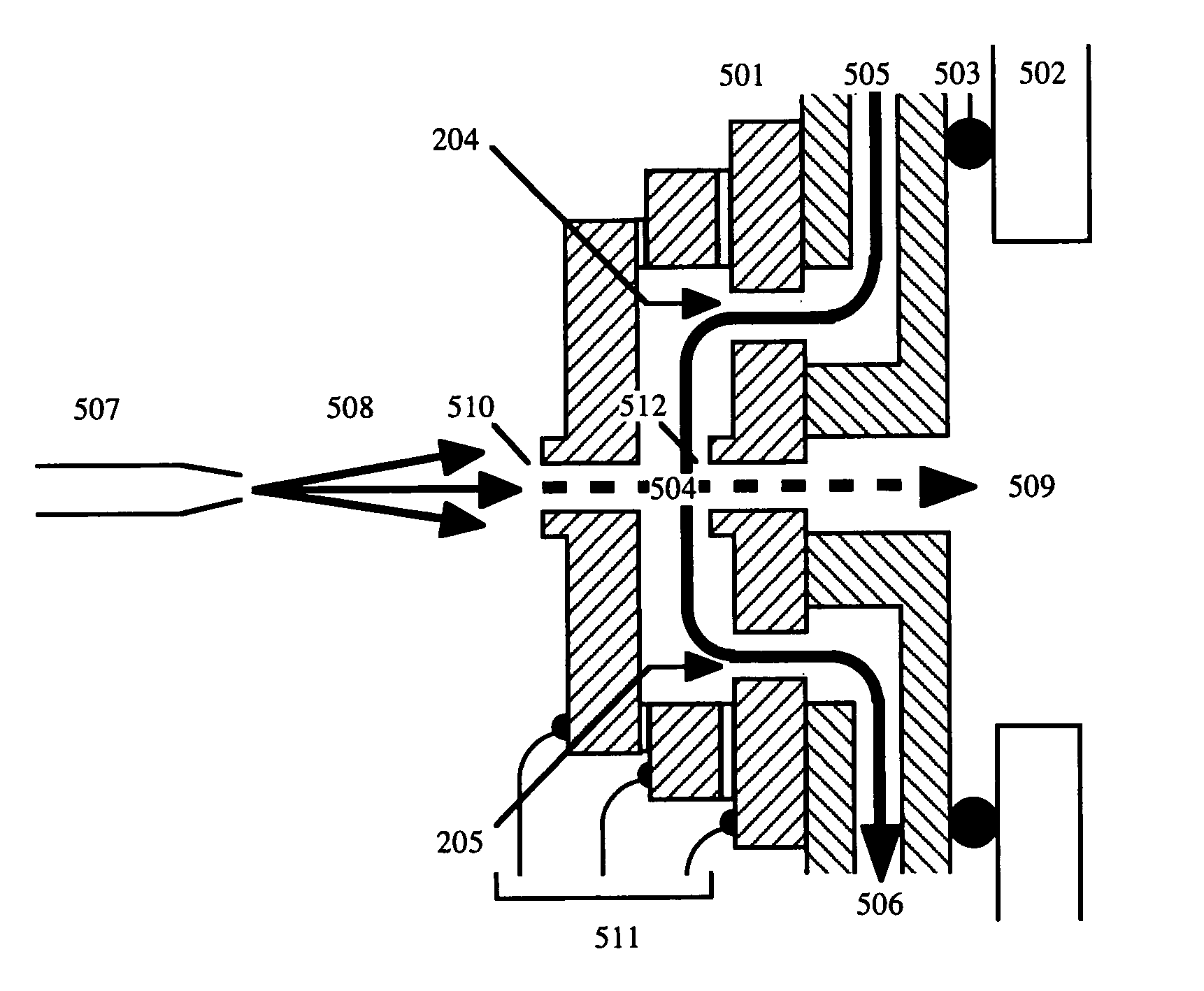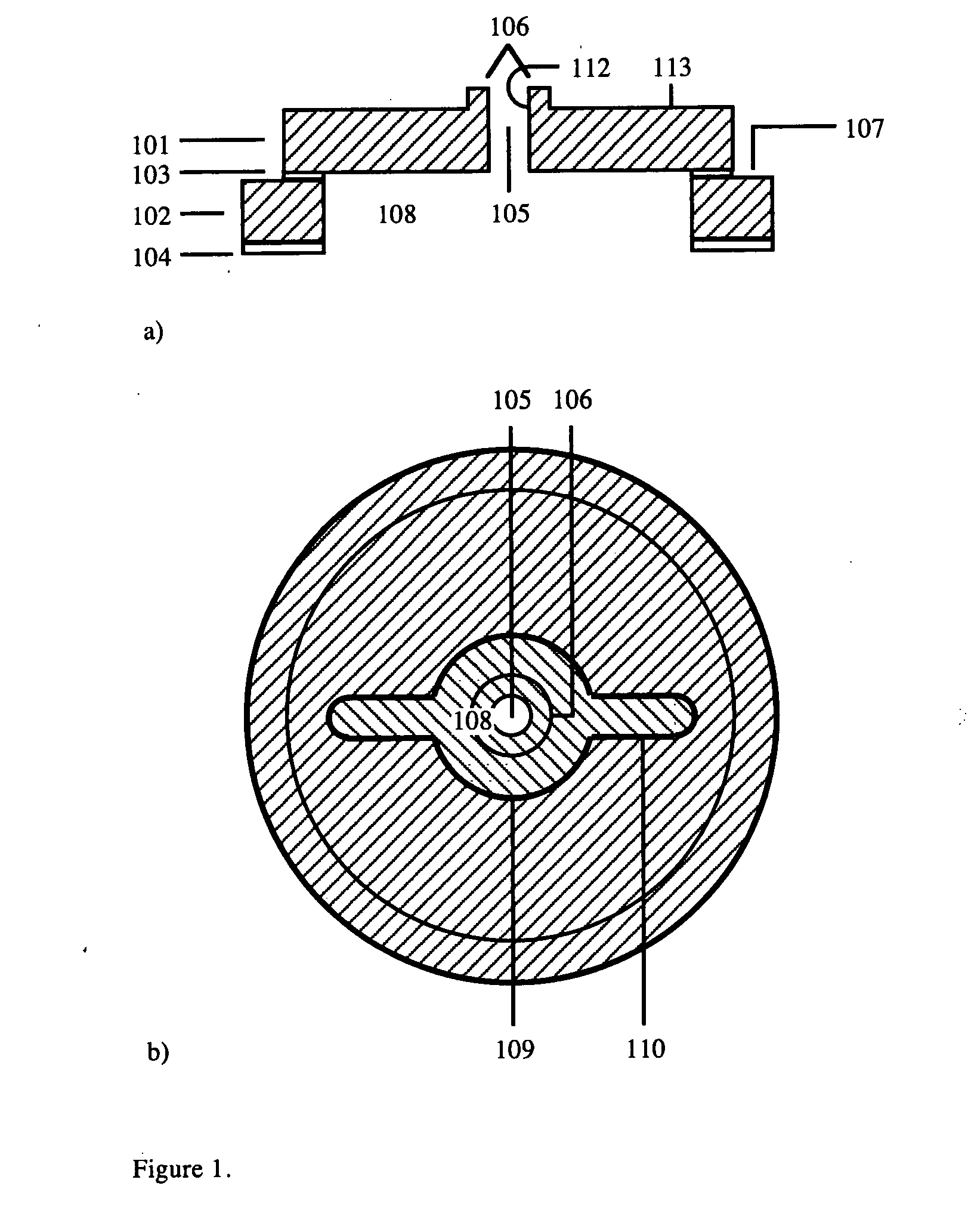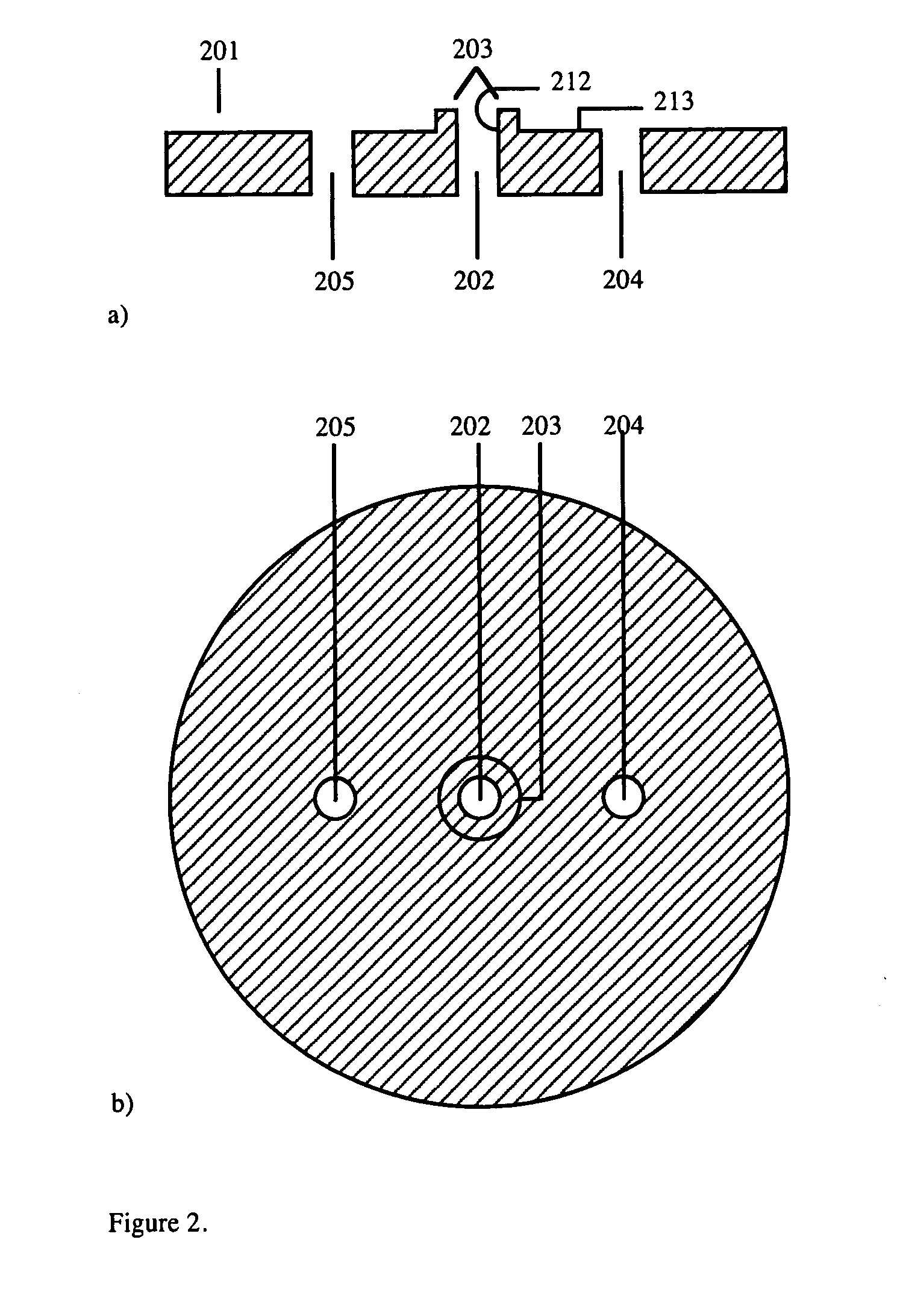Microengineered vacuum interface for an ionization system
a vacuum interface and micro-engineered technology, applied in the field of mass spectrometry, can solve the problems of large, complex and expensive, unnecessary orifices and chambers, and reduce the size and pumping requirements of vacuum interfaces, so as to reduce orifice and channel sizes and reduce the size and pumping requirements
- Summary
- Abstract
- Description
- Claims
- Application Information
AI Technical Summary
Benefits of technology
Problems solved by technology
Method used
Image
Examples
Embodiment Construction
[0018] A detailed description of the invention is provided with reference to exemplary embodiments shown in FIGS. 1 to 8.
[0019] A device in accordance with the teaching of the invention is desirably fabricated or constructed as a stacked assembly of semiconducting substrates, which are desirably formed from silicon. Such techniques will be well known to the person skilled in the art of microengineering. FIG. 1 shows the first substrate, which is constructed as a multilayer. A first layer of silicon 101 is attached to a second layer of silicon 102 by an insulating layer of silicon dioxide 103. Such material is known as bonded silicon on insulator (BSOI) and is available commercially in wafer form. A further insulating layer 104 is provided on the outside of the second silicon layer.
[0020] The first silicon layer carries or defines a first central orifice 105. The interior side walls 112 of the first layer which define the orifice, include a proud or upstanding feature 106 on the ou...
PUM
| Property | Measurement | Unit |
|---|---|---|
| semiconducting | aaaaa | aaaaa |
| electrical | aaaaa | aaaaa |
| electric fields | aaaaa | aaaaa |
Abstract
Description
Claims
Application Information
 Login to View More
Login to View More - R&D
- Intellectual Property
- Life Sciences
- Materials
- Tech Scout
- Unparalleled Data Quality
- Higher Quality Content
- 60% Fewer Hallucinations
Browse by: Latest US Patents, China's latest patents, Technical Efficacy Thesaurus, Application Domain, Technology Topic, Popular Technical Reports.
© 2025 PatSnap. All rights reserved.Legal|Privacy policy|Modern Slavery Act Transparency Statement|Sitemap|About US| Contact US: help@patsnap.com



